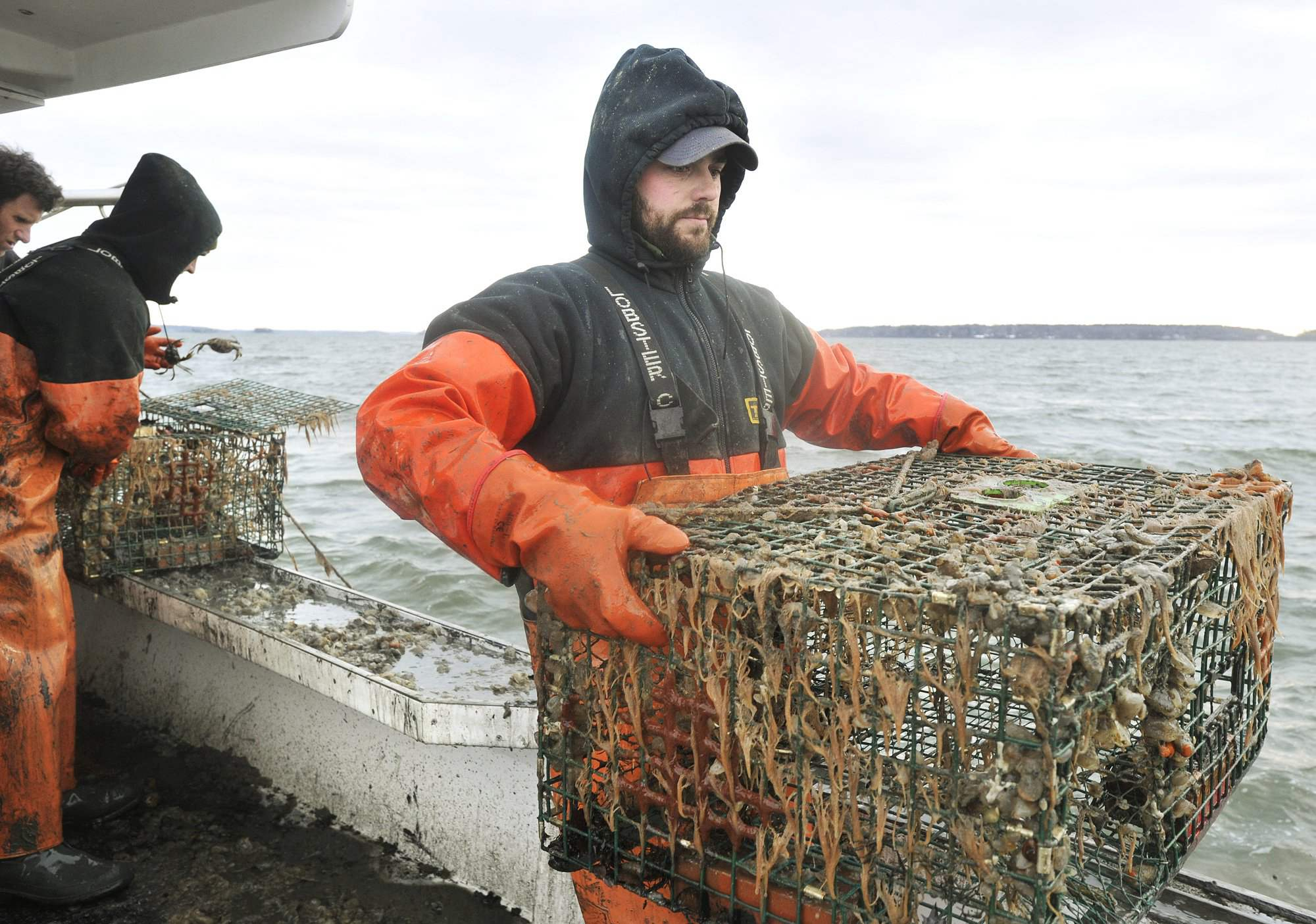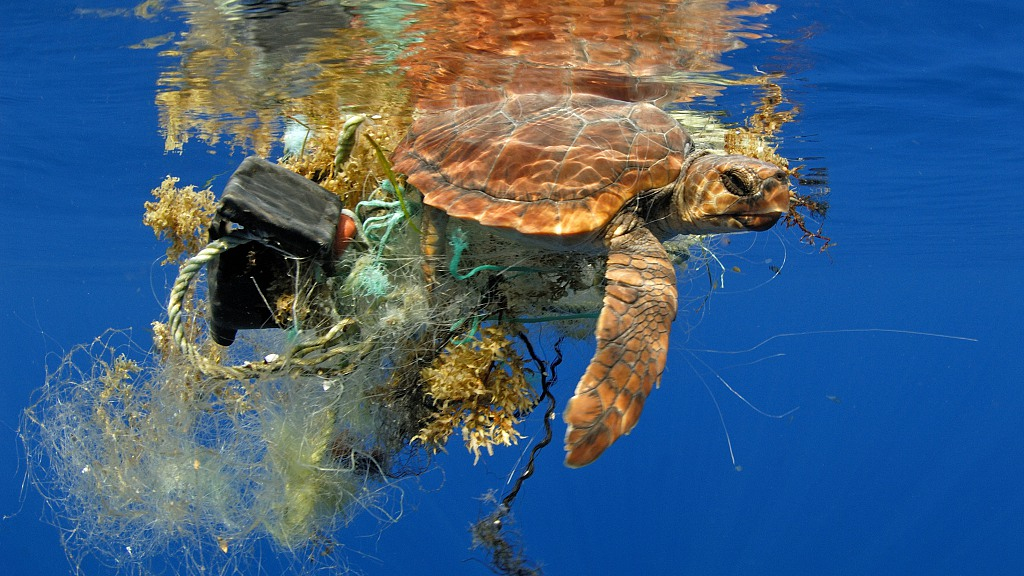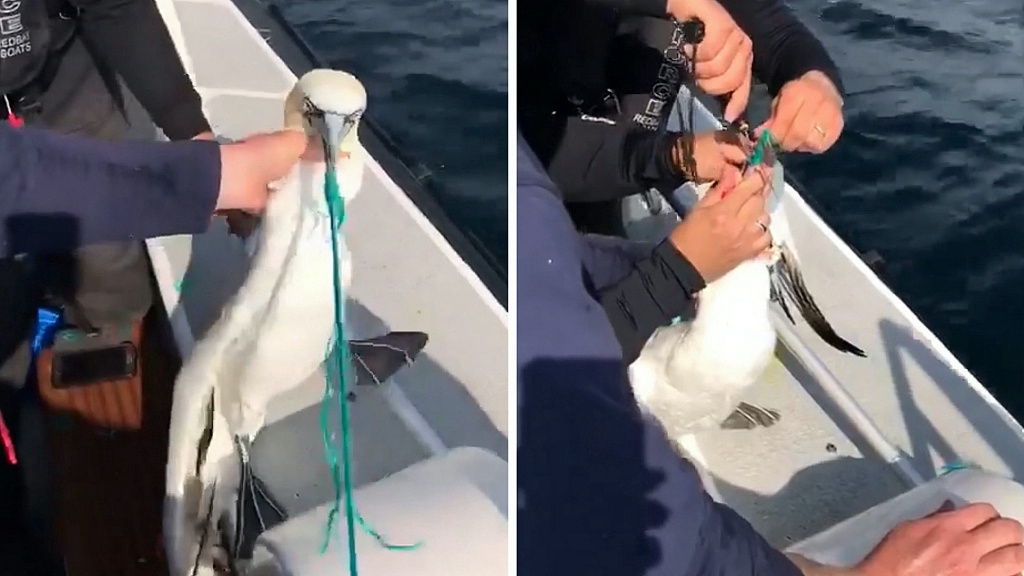
Lobster men are dragging the ocean bottom in a program to clean up "ghost gear". /VCG Photo
Lobster men are dragging the ocean bottom in a program to clean up "ghost gear". /VCG Photo
Far out in the South Atlantic Ocean, invisible to the South African coastline, diver Pascal Van Erp surfaced with an abandoned lobster cage covered in algae and other marine organisms.
Underneath the layer of the dark algae was a green hard plastic cage used to trap lobsters, with a small white pot attached to it.

A sea turtle entangled with abandoned fishing gear. /VCG Photo
A sea turtle entangled with abandoned fishing gear. /VCG Photo
This happened near Mount Vema, an underwater mountain located around 1,600 kilometers northwest of Cape Town. At this distance from South Africa, researchers are still finding abandoned fishing gears.
An underwater drone revealed a scattered array of fishing ropes and nets clinging to the 4,600-meter Mount Vema, whose peak sits 26 meters below the surface. Researchers believed that they have been there for more than a year given the state it was in.

A seal trapped with abandoned fishing net. /VCG Photo
A seal trapped with abandoned fishing net. /VCG Photo
Known as "ghost gear", abandoned fishing objects make up a significant volume of plastic pollution in seas and oceans around the world and can trap large marine wildlife, causing them slow, painful deaths.
Nets, lines, cages, crayfish traps and gill nets are either lost or intentionally dumped in the ocean at an estimated average rate of one tonne per minute.

A pair of gannets were rescued by boat tour operators after being entangled with fishing ropes. /VCG Photo
A pair of gannets were rescued by boat tour operators after being entangled with fishing ropes. /VCG Photo
The United Nations estimates that 640,000 tonnes of fishing equipment is discarded around the oceans each year, the weight equivalent of 50,000 double-decker buses.
They are estimated to account for 10 percent of the plastic waste in the oceans and seas globally, according to the UN Environment Program and the Food and Agricultural Organization (FAO).

A diver is collecting the derelict fishing nets. /VCG Photo
A diver is collecting the derelict fishing nets. /VCG Photo
Plastic can take up to 600 years to break down, eventually disintegrating into harmful micro-particles that are ingested by fish and end up in people's food.
From their underwater resting ground, discarded non-biodegradable materials continue to catch fish and crustaceans, and ensnare large mammals such as dolphins.
Such pollution kills and injures more than 100,000 whales, dolphins, seals and turtles annually, according to UK-based charity World Animal Protection.
More than 300 endangered sea turtles were killed in a single incident last year after swimming into a seemingly discarded fishing net in southern Mexico.
(All photos via VCG)
(If you want to contribute and have specific expertise, please contact us at nature@cgtn.com.)
Source(s): AFP